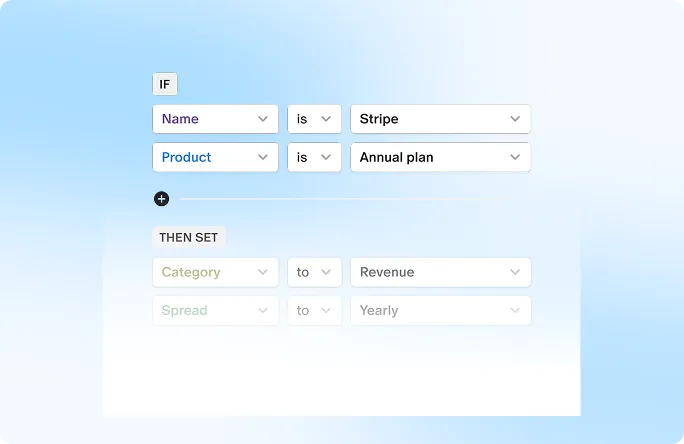TAM refers to the magnitude of the financial opportunity a particular product or service provides. It pertains to the total revenue a business could generate from sales if it is serving every customer in the markets it will operate.
If you capture 100 percent of the market, your company will make the most money possible.
Consideration of the total available market (TAM) for any product or service is critical before embarking on any new business venture. No entrepreneur or investor can afford to take a risk without first doing their research. Using TAM, you may acquire an accurate idea of the possible profits that investment could provide to you and your investors in the future.
This would prevent you from wasting money on ventures with little prospect of generating a big return.
Calculating TAM can also reveal that a product's potential is significantly bigger or smaller than what you felt initially. But due to the nature of the market (highly competitive or large incumbent players), massive funding may be required to capture the market. Therefore, information on the total addressable market can assist in securing money accordingly from investors.
TAM Makes an Important Component of a Pitch Deck
The purpose of including TAM in a pitch deck is to persuade investors that the company is pursuing an opportunity that is large enough to qualify for venture or angel funding.
Before you go for any kind of fundraising, it is important to evaluate your TAM prior to the event. The pitch deck has to have TAM in it for investors. We have discussed how to calculate the TAM further in this article.
Most effective pitch decks include TAM that provides insights into
- How founders think about the market they are servicing
- The amount to which their product-market fit has been demonstrated and
- Product(s) roadmap for the company to capture a large market share
Even if you're confident in your new venture, it's impossible to predict how many people will be interested in your product or service. This is why TAM is essential to determine your company's growth potential.
How does market share influences TAM?
It is doubtful that your company would function as a monopoly. In reality, no company ever captures 100 % of its TAM. There will always be competitors you will be sharing the market with.
If you have a lot of competitors, you'll likely have a small share of the market because you'll be splitting the whole market into many small chunks.
Now that we have an understanding of TAM and its significance, let's move on to how it is calculated.
Total Addressable Market Calculation
This section will cover three methods you can use to figure out the total addressable market.
Top-Down Analysis
Top-down analysis to calculate TAM is an approach that begins with the most expansive estimate feasible and narrows it further down using facts about the company itself.
Top-down analysis presumes the size of the TAM from data gathered by research companies like G2 Crowd, Gartner, WhalePath, and others, that need to be purchased. Alternatively, companies also rely on information provided by third-party experts.
The problem with trusting other sources is that the information is always not completely accurate or up to date and fails to accurately reflect upon the exact parameters of your target market.
But if you still wish to go with top-down analysis, it is better to also do your own market research with the help of consulting professionals who could do Allied Market Research which is valued at $2.47 billion in 2020.
You then need to find out the percentage of $2.47 billion that a 'cloud-based PAM' will cover. After coming to an estimate, you may then need to break down your research based on parameters like, what size of industries it would serve (large or small).
Let's say, you chose SMEs, then you will further need to break down your data to specific vertical types your product is designed for (IT, govt. sector, healthcare, manufacturing, or others), and then finally break it down to geographies you will cover, and ultimately reach your TAM in a nutshell.
Bottom-up Analysis
The bottom-up analysis to estimate TAM relies on data from the company's early sale stages.
The bottom-up analysis is more defensible than the top-down analysis because it is based on data from your own organization.
Also, if your product is new in the market then the bottom-up analysis is the only way to go, to find out your TAM.
(Total no. of potential customers) * (Annual Contract Value) = TAM
For TAM, you need to multiply the annual contract value (ACV) by the number of total current customers.
For example:
Let's say you sell a compliance automation product (like Sprinto or Scrut) for $1000/year, and there are 100,000 potential customers globally, then your TAM would be
100,000* (1000) = $100,000,000 = $ 100 Million
It is preferable to do a bottom-up analysis in order to calculate your TAM because it makes use of actual data on pricing and usage of your product, as opposed to simply disclosing general third-party data. This will give you information on the types of customers your business can expect to serve.
Since TAM is industry-specific, you can determine your target market by conducting research into the industry types of people who you believe will be interested in your product or service.
Doing a bottom-up TAM analysis is also helpful in determining the product-market fit down the line. As it helps you get an understanding of who exactly makes up the market you are analysing.
You can further split down your TAM into different industry groups or geographic locations to demonstrate how you can approach different sections of the market in order to win as much of the total addressable market as you possibly can.
Value Theory Analysis
One of the constraints to both top-down and bottom-up analysis is that they both rely on current information and assume that a new product offering will fit into those existing information structures.
When a company considers growing their main product and cross-selling to existing consumers as part of a long-term strategy, value theory analysis can prove to be beneficial because significant portions of the product have not yet been constructed.
The application of value theory examines how much value customers will obtain from your product or service and how much they will be prepared to pay for that value in exchange.
Value theory analysis involves a great deal of educated guesswork, as to how much of that value creation may be captured by pricing.
It is a great technique to determine what customers think is useful and what they're willing to pay for based on their responses.
Businesses that employ the value theory approach may need to conduct more market research to examine how their product or service's value compares to their competitors, and whether customers are willing to pay more for the additional value.
TAM can be Further Segmented into SAM and SOM
Serviceable Available Market or Serviceable Addressable Market (SAM)
The total addressable market (TAM) can be divided into many smaller parts, which allows different organisations to serve different segments of the total addressable market (TAM). Each of these separate segments is referred to as SAM, which comprises different companies.
In short, SAM represents the portion of the TAM that a particular business is responsible for servicing.
To understand better, consider the following scenario: your company sells Bluetooth speakers in Southeast Asia. Although you have access to the global Bluetooth speaker market, your serviceable available market is limited to the Bluetooth speakers' market in Southeast Asia.
When it comes to revenue potential, SAM provides a much better indication of how much revenue you can realistically expect to generate with your product. However, the total addressable market (TAM) is valuable in illustrating how much room there is for prospective expansion.
Serviceable Obtainable Market (SOM)
The serviceable obtainable market, abbreviated SOM, is the fraction of the serviceable available market (SAM) that you can actually capture for your product or service.
In short, SOM is the actual percentage of SAM that you can realistically obtain.
After considering all the other companies that sell Bluetooth speakers in Southeast Asia, your SOM is the portion of the Bluetooth speaker market in Southeast Asia that you will be able to capture in the scenario above.


 Equity management
Equity management

 Fund management
Fund management

 Fund management
Fund management

 Fund management
Fund management









































